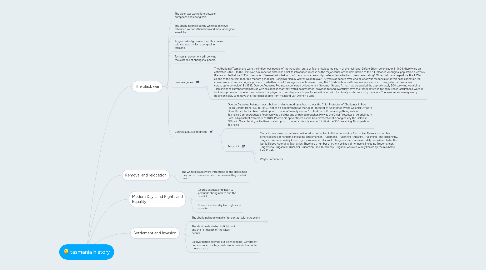
1. The black war
1.1. The black war was a fight between europeans and aboriginals.
1.2. The aboriginal realised the white people hve advanced wepons than them and more aboriginals were killed.
1.3. Truganini died,goverment and historians said she was the last aboriginal in tasmania
1.4. Tasmanian goverment still denying the exisence of aboriganal people.
1.5. mannalargenna
1.5.1. The Aboriginal Tasmanians were the indigenous people of the Australian state of Tasmania, located south of the mainland. Before British colonisation in 1803, there were an estimated 3,000–15,000 Parlevar. A number of historians point to introduced disease as the major cause of the destruction of the full-blooded Aboriginal population. Geoffrey Blainey wrote that by 1830 in Tasmania: "Disease had killed most of them but warfare and private violence had also been devastating." Other historians regard the Black War as one of the earliest recorded modern genocides. Benjamin Madley wrote: "Despite over 170 years of debate over who or what was responsible for this near-extinction, no consensus exists on its origins, process, or whether or not it was genocide" however, using the "UN definition, sufficient evidence exists to designate the Tasmanian catastrophe genocide." By 1833, George Augustus Robinson, sponsored by Lieutenant Governor George Arthur, had persuaded the approximately 200 surviving Aboriginal Tasmanians to surrender themselves with assurances that they would be protected, provided for and eventually have their lands returned to them. These 'assurances' were in fact lies - promises made to the survivors that played on their desperate hopes for reunification with lost family and community members. The assurances were given by Robinson solely to remove the Aboriginal people from mainland Van Diemen's Land.
1.6. George augustus robinson
1.6.1. George Augustus Robinson was a builder and untrained preacher. He was the Chief Protector of Aborigines in Port Phillip District from 1839 to 1849. Prior to his appointment as the Chief Protector of Aborigines by the Colonial Office in Great Britain, he had been called upon to mount a "friendly mission" to find the 300 remaining Aboriginals in Tasmania.George Augustus Robinson was a builder and untrained preacher. He was the Chief Protector of Aborigines in Port Phillip District from 1839 to 1849. Prior to his appointment as the Chief Protector of Aborigines by the Colonial Office in Great Britain, he had been called upon to mount a "friendly mission" to find the 300 remaining Aboriginals in Tasmania.
1.6.2. Truganini
1.6.2.1. Truganini was a woman widely considered to be the last full blood Aboriginal Tasmanian. There are a number of other spellings of her name, including Trugernanner, Trugernena, Trugannini, Trucanini, Trucaminni, and Trucaninny. Truganini was also widely known by the nickname Lalla Rookh.Truganini was a woman widely considered to be the last full blood Aboriginal Tasmanian. There are a number of other spellings of her name, including Trugernanner, Trugernena, Trugannini, Trucanini, Trucaminni, and Trucaninny. Truganini was also widely known by the nickname Lalla Rookh.
1.6.2.2. Wayler Tarenoreror
2. Removal and relocation
2.1. The white diseases were introduced to the aboriginals they had no reseliance over this desaese they started dying.
3. Modern Day Land Rights and Equality
3.1. George augustus robinson to persuade aboriginals to end the conflict.
3.2. There is modern day land rights and equality.
4. Settlement and Invasion
4.1. The aboriginal people make first contact with europeans.
4.1.1. setelments/invasions
